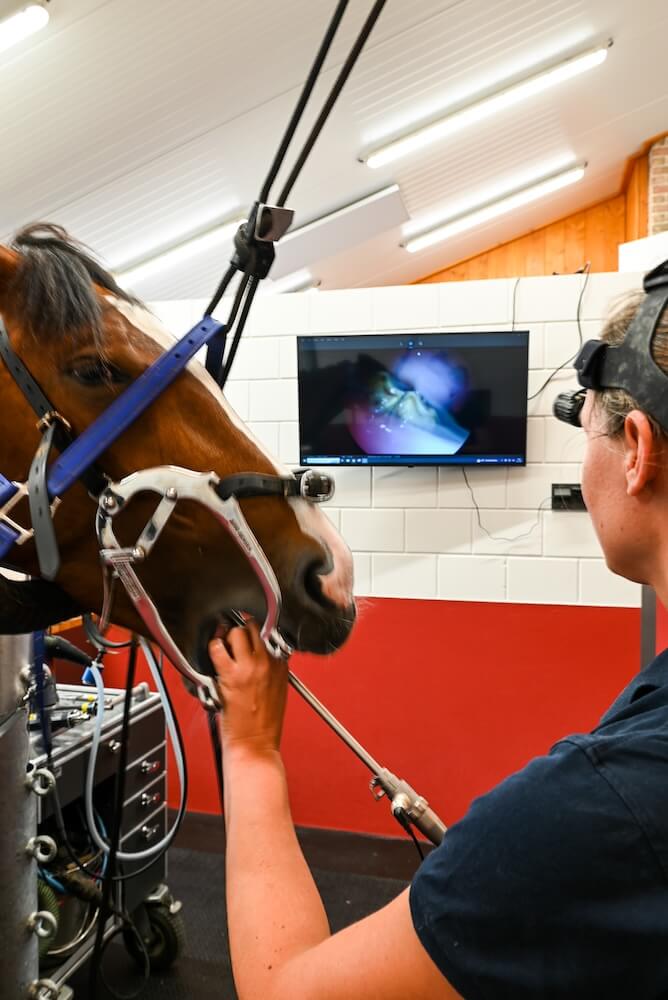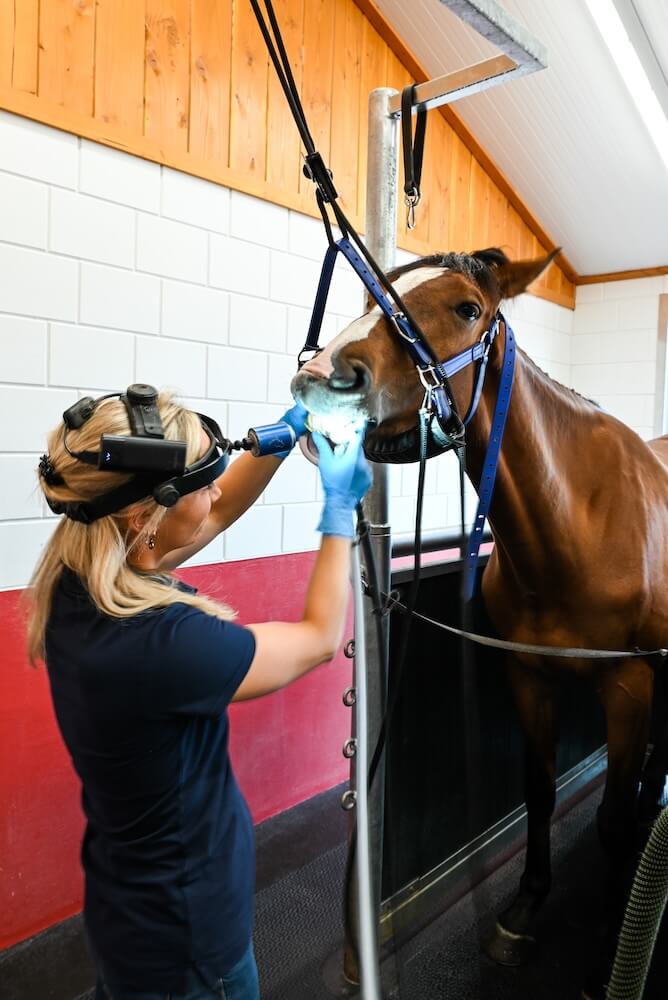In some cases, it is necessary to remove one or more incisors from a horse. Reasons for this may include:
- An old fracture of the tooth or tooth root
- A root canal inflammation with persistent pain or infection
- The presence of EOTRH (Equine Odontoclastic Tooth Resorption and Hypercementosis) , a painful condition characterized by tooth resorption and excessive cement formation
At SMDC, incisor extractions are performed by experienced veterinarians with specific expertise in restorative and surgical dentistry.
Treatment
The extraction is performed with the horse standing under sedation, which makes the procedure significantly less stressful for the animal. For optimal pain relief, a combination of local infiltration anesthesia and/or nerve block anesthesia (numbing the nerves that supply the tooth and jaw) is used. This ensures the horse remains comfortable and cooperative throughout the treatment.
Depending on the situation, additional imaging (such as radiographs or CT scans) is performed beforehand to clearly assess the tooth root structure and any pathology. This allows us to plan the extraction carefully and prevent complications.
Aftercare
After extraction, the wound area is cleaned and, if necessary, sutured. Most horses recover quickly and without complications. Owners always receive clear aftercare instructions, and we collaborate with the referring veterinarian or dentist for follow-up if desired.


EOTRH: a painful and chronic dental disease
Equine Odontoclastic Tooth Resorption and Hypercementosis is a painful, chronic dental condition in horses (especially older ones), affecting the incisors and sometimes the canine teeth or first molars.
EOTRH can occur at different stages and is characterized by root resorption and/or abnormal cement formation (hypercementosis). This eventually leads to painful, loose, inflamed, or even fractured teeth.
The symptoms may be subtle in the early stages. Many horses mask pain, making early recognition important. Watch for the following signs:
- Behavioral changes or loss of performance
- Reduced appetite or slow eating
- Difficulty biting off carrots or hay
- Dropping or balling up feed
- Weight loss
Signs during training:
- Resistance when taking the bit
- Unsteady contact to the bit
Visible signs include:
- Inflammation or swelling of the gums around the incisors
- Redness, blood, or pus around the incisors
- Receding gums or exposed tooth roots
- Discoloration or fractured incisors
- Bad breath
Diagnosis
Radiographic examination is essential to determine the severity and extent of the disease. The images are used to assess tooth resorption, excessive cement formation, and bone changes.
EOTRH is progressive and cannot be cured, but it can be managed. Treatment depends on the stage:
- Mild cases: regular monitoring with clinical and radiographic examinations, combined with targeted pain management.
- Severe cases: extraction of the affected incisors is often the best solution. Although this may sound drastic, horses experience visible pain relief and function very well without incisors.
At SMDC, incisor extractions are performed with the horse standing under sedation and local anesthesia. After recovery, horses can eat normally again and often show rapid improvement in both behavior and performance.
